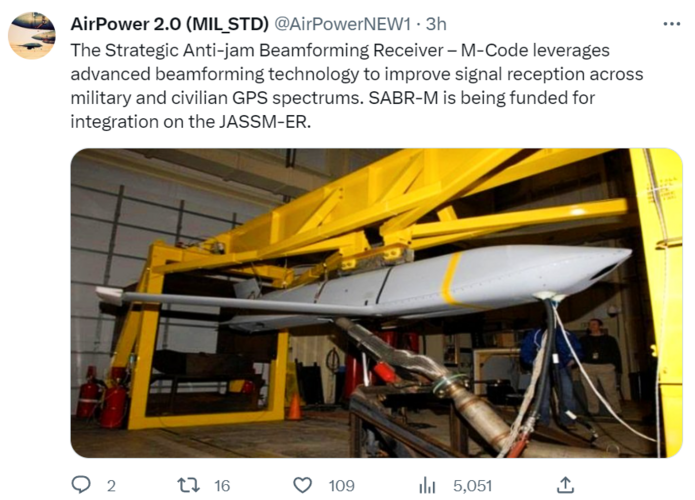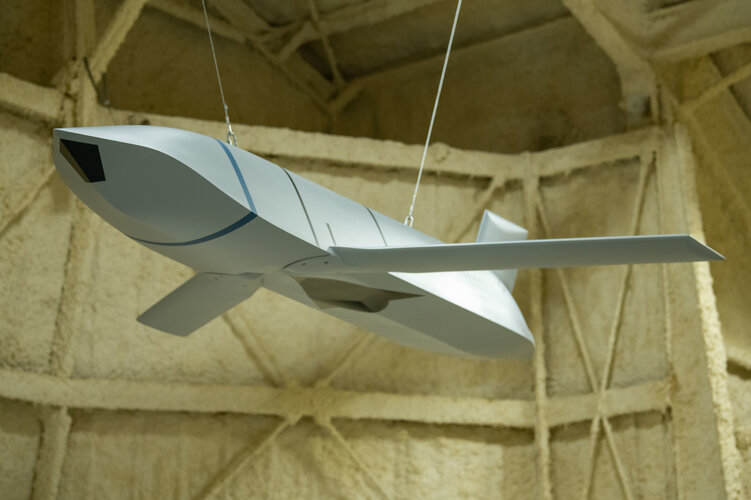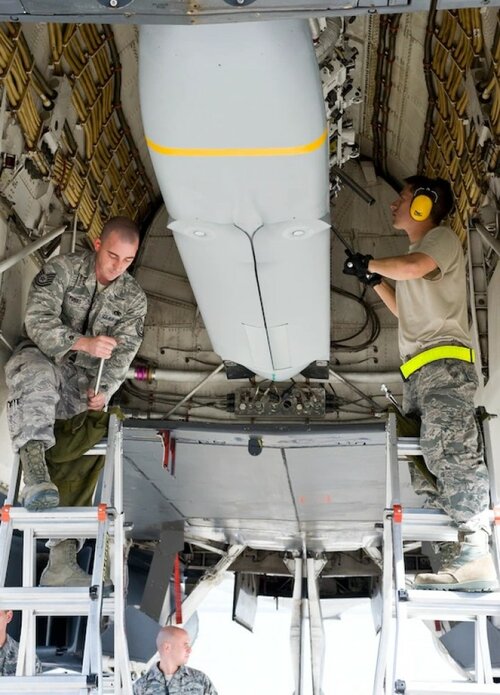They just have to use the variable wing. Increase sweep and nose down moment increases : the bird pitch down. Decrease the sweep and the nose down moment decrease: pitch up.
You can see at release in the video above that the VG goes to high sweep while the missile increase separation with the Super Hornet and then move back to a lower sweep for to regain cruise attitude.
They probably use differentiate sweep angle for roll.
A very stealthy missile doesn't want to have to play with elevons (that are always deflected one way or the other).





